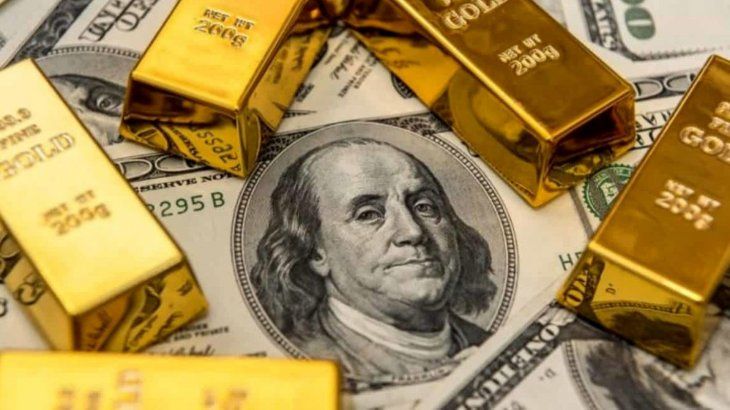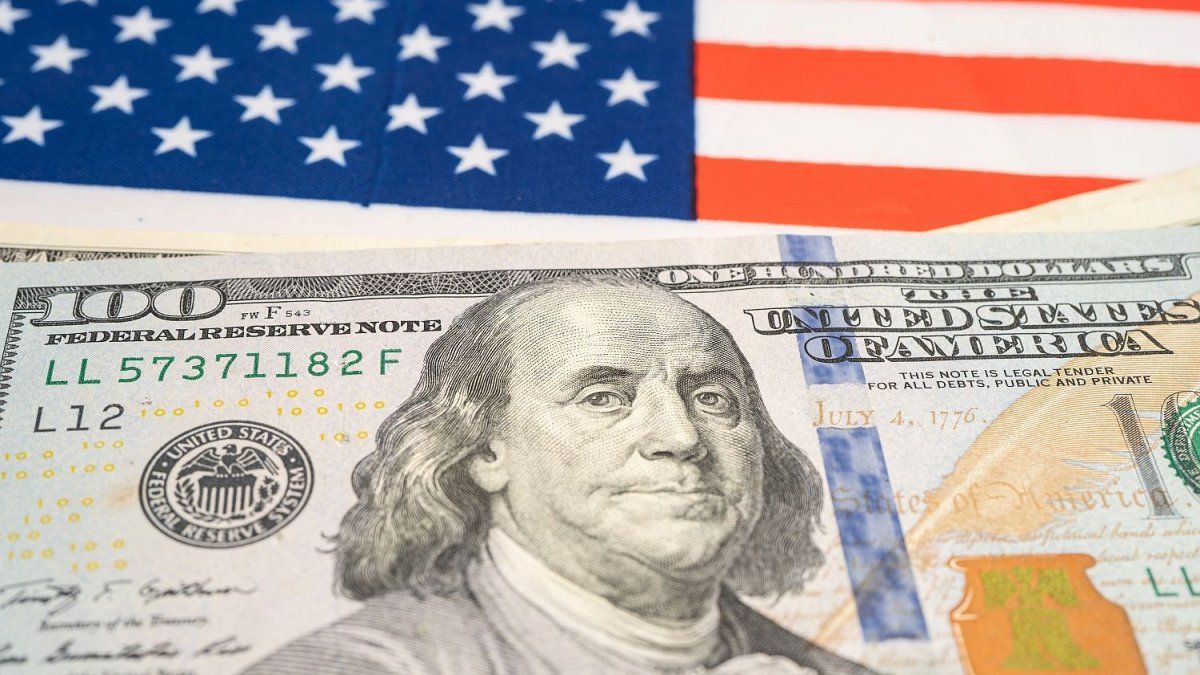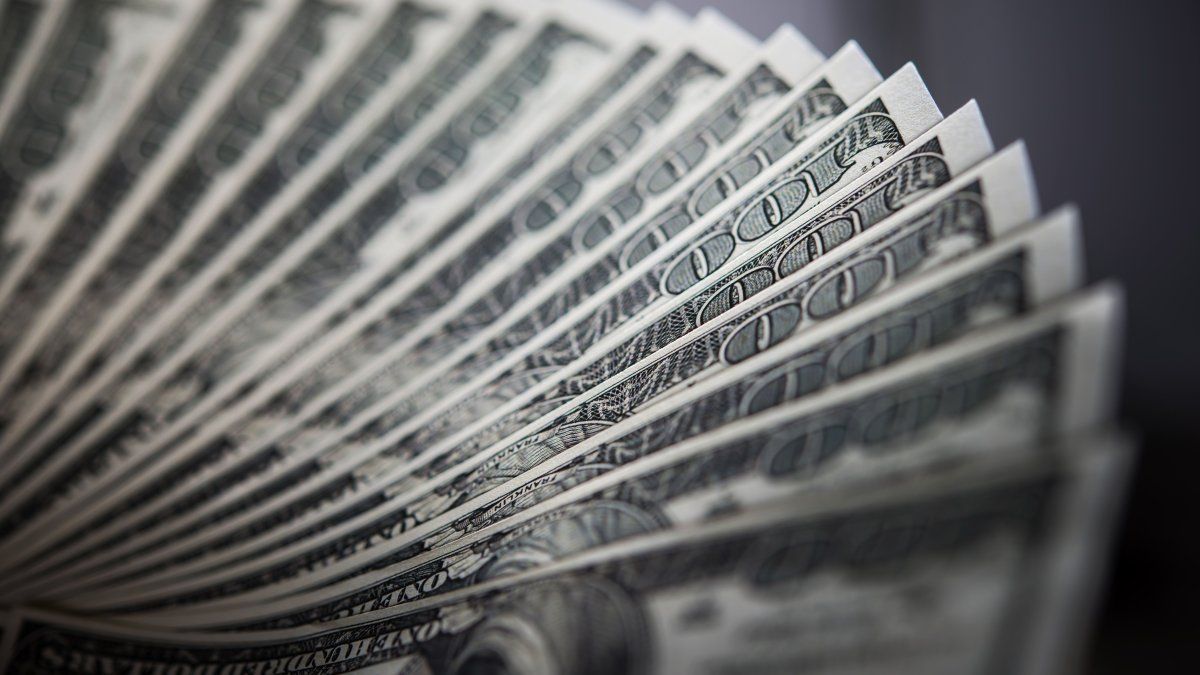The latest data from the International Monetary Fund (IMF) reveal that the dollar’s share of global reserves fell to the lowest level in 30 yearsas central banks diversify their holdings towards assets in other currencies and accumulate more gold. Even so, despite losing ground as a global reserve currency, For now, the dollar maintains its dominance.
According to the most recent information from the IMF’s COFER (Currency Composition of Official Foreign Exchange Reserves) The proportion of foreign exchange reserves denominated in US dollars fell to 57.4% of total foreign exchange reserves in the third quarter of 2024, the lowest level since 1994. It is worth noting that foreign exchange reserves denominated in US dollars include both US Treasury securities and US agency securities, US mortgage-backed bonds (MBS), US corporate bonds, US stocks and other dollar-denominated assets. Americans held by central banks other than the Federal Reserve (Fed).
Going back a few years, In the first quarter of 2015, the dollar’s participation was 66%, so that in these ten years the relative weight of the dollar in world reserve currencies fell 8.6 percentage points. “If this rate of decline continues, the dollar’s share will fall below 50% in less than ten years, at the end of 2034”projects analyst Wolf Richter. Looking at the history of recent decades, the dollar’s share had already fallen below 50% in 1990 and 1991, in the final stretch of its extensive decline from a share of 85% in 1977 to 46% in 1991, after that inflation would explode in the US. in the ’70s (due to the oil shock) and global confidence in the Fed’s ability and/or will to control inflation deteriorated. However, In the ’90s, central banks once again accumulated dollar-denominated assets, until the euro arrived.
Rise of “non-traditional reserve currencies”
Already in a 2022 document (“The Stealth Erosion of Dollar Dominance: Active Diversifiers and the Rise of Nontraditional Reserve Currencies” by S. Arslanalp, B. Eichengreen, and Ch. Simpson-Bell) the IMF had warned of the existence of 46 “diversifiers”. assets” among central banks, including those of most G20 economies. In that report he defined them as central banks that held at least 5% of their foreign exchange reserves in “non-traditional reserve currencies.” The international financial organization detected that two factors contributed to the increase in “non-traditional reserve currencies.” On the one hand, the growing liquidity of assets denominated in “non-traditional reserve currencies”, which made it easier for central banks to negotiate the amounts they manage, and on the other hand, the search for assets with higher yields in other places during the 0% era in the US and Europe.
To have a brief dimension, Central banks’ holdings of foreign exchange reserves denominated in all currencies, including the US dollar, at the end of the third quarter of 2024 increased to US$12.73 trillion from US$11.85 trillion a year ago. The main holdings are assets denominated in dollars 6.77 trillionthen assets denominated in euros for $2.37 trillion, yen-denominated assets for $0.69 trillion and sterling-denominated assets for $0.59 trillion. Regarding the other main reserve currencies, the the participation of the euro, the second, which rose to 20%, the highest level since 2022 and appears to have stagnated there.
Dollar strengthened in the world: it reached its maximum five months
The US dollar and euro are broadly leading. Another group of reserve currencies follows.
The Chinese renminbi and other currencies
Regarding the rise of “non-traditional reserve currencies”, the data shows that all of these other currencies, with the exception of the Chinese renminbi, have been gaining share, at the expense of the dollar, while the euro’s share has remained roughly stable . This includes the basket of “non-traditional reserve currencies,” as the IMF calls them, which are combined into “All Others,” the combined share of which has been increasing since 2020. So far, China is the world’s second-largest economy, but its currency plays only a small role as a reserve currency and has lost ground against the dollar and other currencies since 2022. It is worth remembering that in 2016, the IMF added the renminbi to its basket of currencies supporting the Special Drawing Rights (SDR) and the world believed that it would quickly become a threat to the dominance of the US dollar as the global reserve currency. However, central banks appear to be unconvinced by the attractiveness of renminbi-denominated assets for a variety of reasons, including capital controls, convertibility issues and others. Already last year, the Chinese currency was surpassed, for example, by the Australian dollar. Behind the US dollar and the euro, the most important currencies by share are the Japanese yen with 5.8%, the British pound 5%, with 4.5% “All other currencies” together, then the Canadian dollar 2.7%, the Australian dollar 2.3%, the renminbi 2.2% and the Swiss franc with 0.2%.
gold dollar reserves.jpg

According to the IMF, central banks’ gold reserves have increased during this decade to reach 1,160 million troy ounces (about $3.08 trillion).
The role of gold in reserves
The other great diversification has been goldthat while precious metal bullion is not a “foreign exchange reserve” asset of central banks and is not included in the data, it is a “reserve asset” that does not include foreign currency. After the debacle of the gold standard and dollar-gold convertibility in the US in the early 1970s, central banks spent decades getting rid of their gold reserves, but about ten years ago they began rebuilding them. According to the IMF, Central banks’ gold reserves have increased during this decade to reach 1,160 million troy ounces (about $3.08 trillion), compared to $12.3 trillion in foreign exchange reserves.
A no less important fact is that, Although the dollar loses share, this does not translate, for the moment, into a liquidation of holdings of US Treasury securities by foreign central banks and other foreign holders. since they have reached a new record: in the last 12 months, foreign holders added 880,000 million dollars, which raised their reserve to a record of 8.67 trillion dollars, according to ICT data from the US Treasury Department.
Source: Ambito




